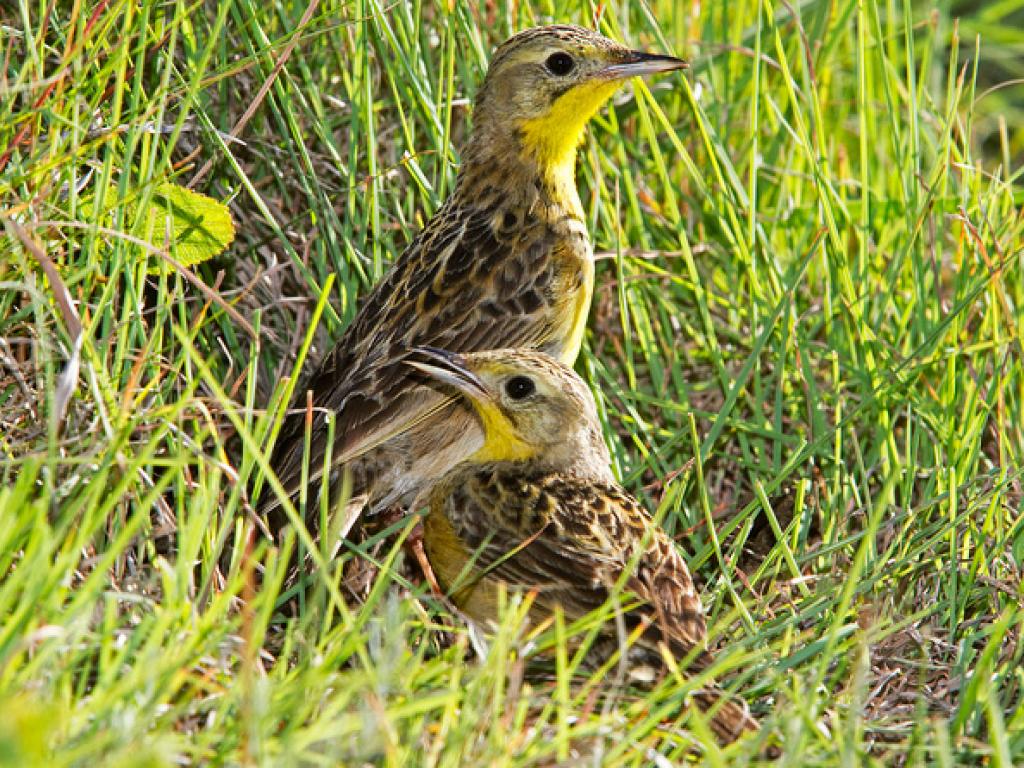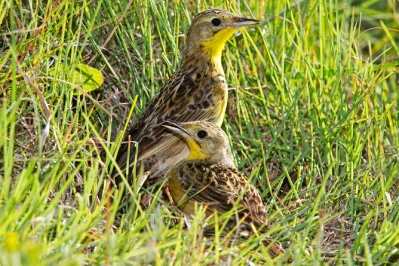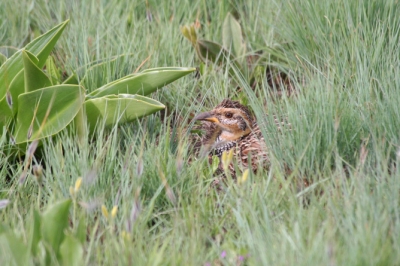What South African farmers can do to protect endangered grassland birds


Globally vulnerable yellow-breasted pipits are endemic grassland specialists severely affected by current farming practices. (Photo by Warwick Tarboton.)
South Africa's grasslands host five RAMSAR wetland sites. RAMSAR is the convention on wetlands. It is an intergovernmental treaty that provides the framework for national action and international co-operation for the conservation and wise use of wetlands and their resources.
These grasslands, including the wetlands, comprise around 16.5% of South Africa's land surface. They are one of the most threatened ecosystems. More than 60% of the grasslands have been irreversibly transformed by agricultural cultivation and forestry and only 2.8% are formally protected.
Moist highland grasslands in South Africa, of which only 1.5% are conserved, were historically maintained by winter and spring fires. This was probably done at intervals of four years or more, and by summer grazing by migratory, medium-sized antelope.
Today these grasslands are managed by livestock farmers, who in most areas burn annually at the start of the rainy season, in early summer. This coincides with the onset of the breeding season for birds. The two major drivers of grassland disturbance, fire and grazing, have therefore been altered dramatically.
All is not lost. Changes to agricultural practices can provide surrogate habitats for certain bird species without compromising the economics of livestock farming.
Simple changes to current management could translate into immediate biodiversity benefits without compromising the economics of livestock farming. If managers burn biennially or every three years in a patchwork – so that their farms contain grasslands of different ages – biodiversity benefits will be demonstrable and immediate.

Red-winged Francolins can be completely removed from grasslands by annual burning and heavy grazing. (Photo by Ian Little.)
The effects of fire
Research set out to understand how fire and grazing interact to influence communities of plants, invertebrates and ultimately birds.
The project included a nature reserve, various farming practices and communal lands that lack a managed fire regime. In terms of vegetation quality, burn frequency has an overriding effect. Both plant species diversity and vegetation structure are negatively impacted by annual burning. Also, a combination of frequent fires and heavy grazing can result in a low, lawn-like sward.
Communal lands look much the same, even though fires are not managed, simply because grazing pressure is so high. Frequent burning also affects the diversity of invertebrates, with diversity being lowest in annually burned areas. However, in terms of food for birds, the pattern is somewhat different.
Grasshoppers, which are the favoured food for many insectivorous birds, dominate the invertebrate fauna. They also respond positively to burning, and are most abundant at sites that have been burned in early summer, reaching peak abundance towards late summer.
The conundrum for birds
The different responses of vegetation and invertebrates to management practices create a conundrum for birds. Food is most abundant in areas burned in that breeding season, yet the short grass sward provides little concealment for nests. Most birds who feed in these areas nest there as well.
If birds aggregate where food is abundant, then bird density may not mirror reproductive success, because nests in these sites are easily located by predators. In other words, bird density may not send an honest signal of bird performance. These grasslands are rich in predators, with snakes being the main predators of eggs and chicks.
Following more than 400 nests of grassland birds, we found that nest-site selection and nest success are driven by vegetation structure, which itself is driven by management. For birds that build cup nests on the ground, nest success rates increase through the season. This is because predation rates fall as vegetation grows.
Incorporating plant, insect and bird diversity data in analyses, we confirmed the importance of conserved areas for birds in moist highland grasslands.
We showed unequivocally that current farm management practices have significant negative repercussions for bird abundance, species richness, nest density and fledgling output.
We can further confirm that the increasingly popular use of "holistic" grazing practices in intact high altitude grassland systems has a significant detrimental effect on all grassland biodiversity.
Written by Rob Little, Manager: DST-NRF Centre of Excellence at University of Cape Town; and Ian Little, Research Associate, Rarity and Conservation of African Birds at University of Cape Town
Disclosure statement: Rob Little works for the Percy FitzPatrick Institute of African Ornithology Centre of Excellence at the University of Cape Town and receives funding from the National Research Foundation of South Africa. Ian Little is employed by the Endangered Wildlife Trust and receives funding from SANBI and the National Research Foundation of South Africa